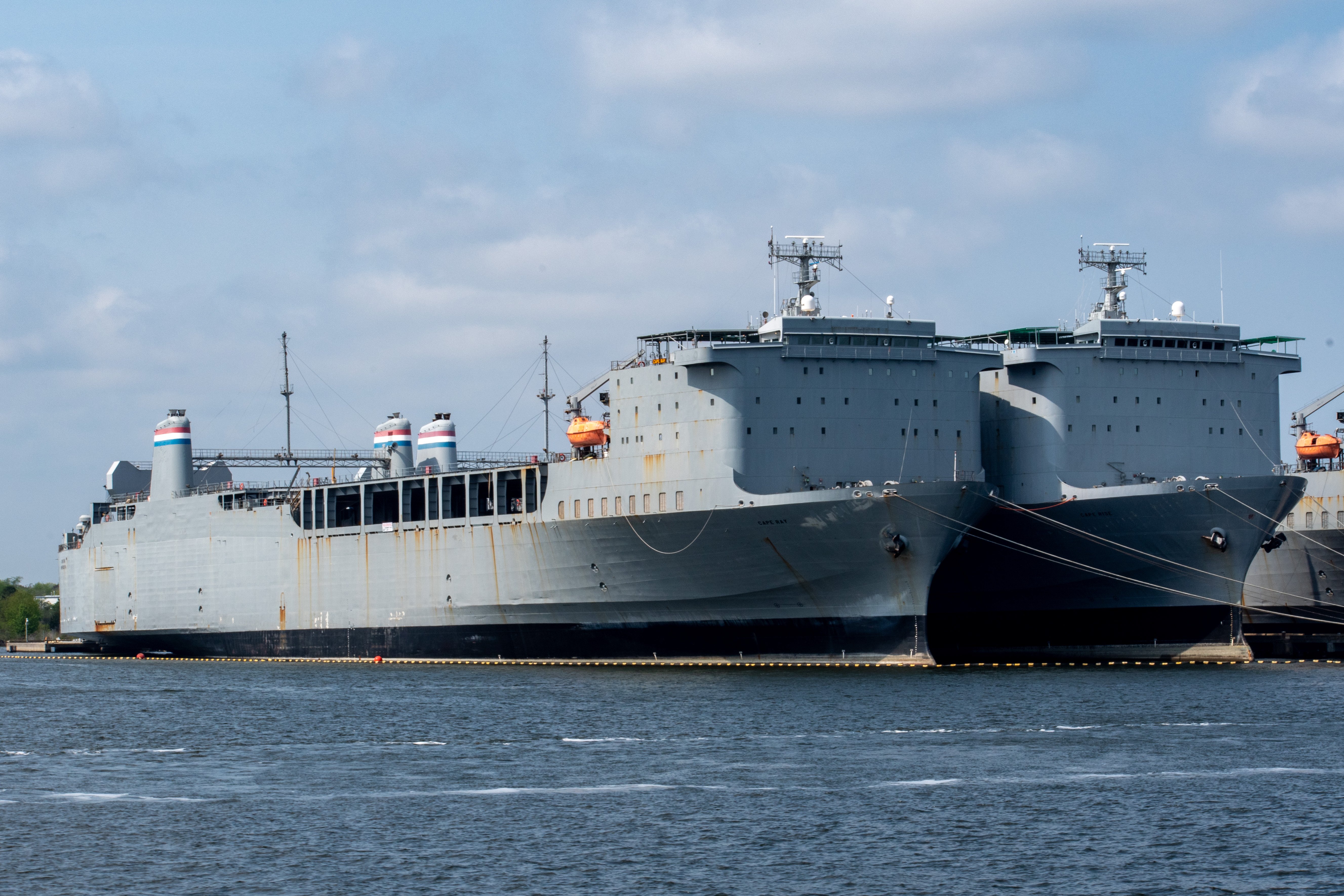
NATIONAL HARBOR, Md. – The U.S. commercial maritime industry needs more business incentives to make changes that support the Defense Department’s requirements for sea lift, an industry panel said this week.
“When industry needs to step up, industry can,” said Jeff Dixon, president of shipping support company Tote Services, said at the 2023 Sea Air Space symposium on this week.
“[But] you can’t surge up for a short time need” to modernize and expand the nation’s sealift capacity.
The same can be said about having credentialed mariners, other panelists said. Merchant mariners need steady employment and training.
Cargo preference for U.S. flagged requirements help, as does the Jones Act covering American-building, crewing and destinations inside the United States and territories.
But it does not go far enough to expand a modernized fleet and retain a skilled workforce, Sara Fuentes, vice president of government affairs at the Transportation Institute, said.
The panel agreed the U.S. merchant marine has been in steady decline for years.
The average age of the ships in Maritime Administration’s Ready Reserve Fleet is 44 years; and a number of them use propulsion systems that can no longer be modernized.
Fuentes said other factors at play in shipping has been the growing reliance of “flags of convenience” from Liberia, Panama, Marshall Islands and Hong Kong to carry cargoes with crews not as rigorously trained as American mariners sailing on vessels that wouldn’t meet U.S. safety standards.
Also China, has been investing in other nations’ ports, including Panama, that could close to the United States in a crisis, she said. Fuentes noted the disruption in the supply chain of goods coming from Asian manufacturers caused by the COVID-19 pandemic in the United States that could be worsened in military conflict.
China’s behavior is that of a “typical bully” trying to eliminate any competition by any means, Fuentes said about cargo carrying. China with its extensive merchant marine fleet also “can decide it won’t pick up any American cargo,” she said. She termed that “supply chain warfare.”
Christopher Moore, senior adviser to the top federal sealift officer in the Maritime Administration, said he would like to more than 100 American-flagged ships hired by the Pentagon when needed as a commercial surge fleet. He noted funds appropriated to replace 10 aging roll-on, roll-off cargo ships in MARAD’s Ready Reserve Fleet, but said he wished there was money for 50 more vessels to meet different needs.
All the panelists noted the importance of the Tanker Security Program to ensure the distribution of fuel to dispersed forces in the Indo-Pacific as meeting a security need and helping American shipping. Spotlighting the importance of tanker security has been the closure of the Red Hill Bulk Fuel Storage facility in Hawaii.
The facility was ordered closed following fuel leakages contaminating Oahu’s water system.
Since 2021, the Navy has been looking for ways to sustain itself and the other services in high-end conflict with few government-owned ships and American commercial vessels to carry cargo. One answer has been to buy foreign-made ships, modify them to American standards and add them to the fleet, but the move remains controversial.
Retired Rear Adm. Ann Phillips, who heads MARAD questioned if the Ready Reserve Fleet could be fully manned in a crisis last week before the House Armed Services Committee. Dixon said recruiting and retaining mariners are his chief concern.
“Most people have no idea how we recruit, retain” and assign credentialed mariners to ships, Dixon said. He added he works through two unions that credential officers and crews to man American vessels. “To me, it’s a critical relationship.”
“We need to grow the workforce,” referring both to mariners and shipyard workers.
“We have world-class shipyards with highly trained workers,” Dixon said. Keeping American yards order books full allows them to grow and also has a positive economic impact on the communities of the second and third-tier suppliers that buying overseas does not.
When asked about the National Security Multimission Vessel program, Dixon said “It was a once in a lifetime” opportunity for Tote The five ships being built in Philadelphia will be sent to the five maritime academies for training purposes but can be called upon to fill out humanitarian and disaster relief missions.
For Tote, designated as the vessel construction manager in the program, there was no long-term economic gain but the need for these ships was of national importance, he said. The idea behind the manager was “to deliver best commercial practices [for government work] in yards not used to doing government work.”
The first ship, Empire State VII, was delivered on June 1, Dixon said, and 0.3 percent above estimated cost. It will be the training ship for the New York Maritime Academy.
The slight delay in delivery from early April and slightly higher cost were attributed to the pandemic’s impact on the work force and supply chain problems, he said.
“No one had ever heard the word ‘COVID’” when the contract was signed.
Moore said the program was a successful case of an advanced designed aligned with the right manufacturing and right shipyard in “coming up with a process to build new ships.”





